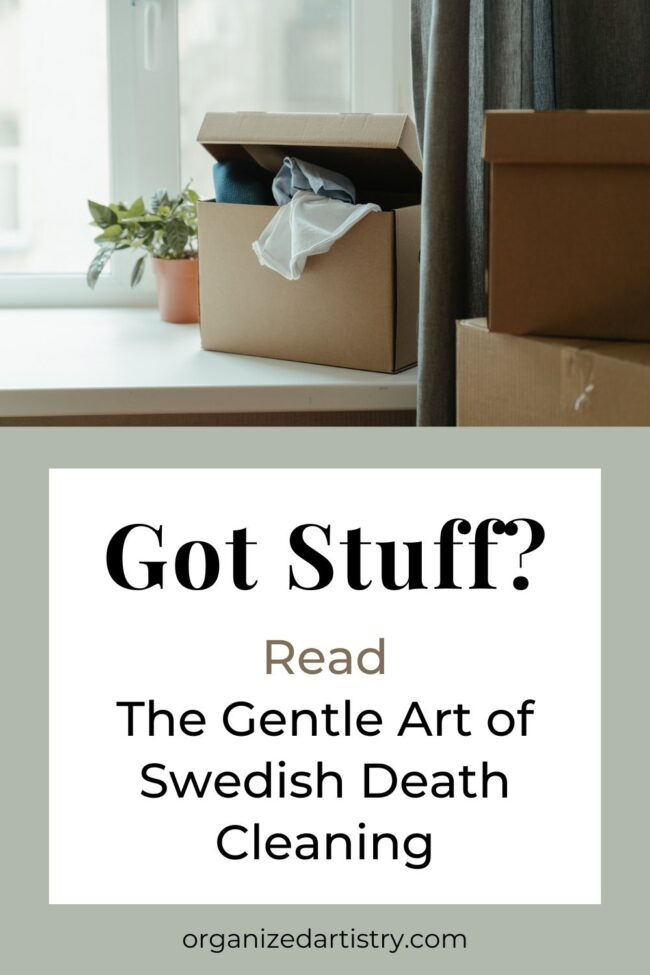
There’s a saying that goes…
“We spend the first two thirds of our life acquiring things and the last third of our life trying to get rid of it all.”
Did you chuckle when you read that or did it on some level, resonate with you? Or both?
Take a look around your home. How many items do you think you own? And how long have many of those items been in your home?
If you have kids, if you like to collect memorabilia, if you’ve inherited items from deceased loved ones, if you love to shop–then you have stuff in your home–and lots of it. Even if you don’t own anything that fits in those categories–you still probably have a good amount of items in your living space.
In the end and at the end–you can’t take it all with you. So, the question is: “How do I manage all of my ‘stuff?'”
The answer: Consistently declutter your belongings over time. One shelf at a time. One drawer at a time. One decision at a time.
Decision. That’s a word that has more to do with decluttering and organizing than most people think. Nothing happens without making a decision. Papers don’t make it into a file cabinet or recycle bin, clothing that doesn’t fit stays in the closet, ‘aspirational’ craft supplies remain in the shopping bag they came in. You can’t declutter, organize, and move forward in your life without making a decision.
Maybe you’ve always been an indecisive person. Maybe you have trouble parting with sentimental items. Or, maybe your stuff brings you comfort.
Decision-making is hard. But, it’s worth it.
You may not realize it but when it comes to your ‘stuff,’ the decisions you’ll be making (or NOT making) don’t just affect you. They also affect your family, friends, and the legacy you will someday leave behind.
How do I know this?
In my twenty years as a Professional Organizer, I have worked with families of those who have passed away or entered nursing homes and I have assisted them in the painstaking process of going through their loved one’s belongings. It is heartbreaking to watch people sort through their loved one’s closets, drawers, papers, and photos with no knowledge of what to do with it all. Sometimes, they even discover objects they never knew existed and are now unable to ask their family member about them.
You don’t have to (and you really shouldn’t) wait until the last third of your life to declutter your home.
Need some guidance? I highly recommend reading the book: The Gentle Art of Swedish Death Cleaning: How to Free Yourself and Your Family From a Lifetime of Clutter
Swedish Death Cleaning? Don’t get nervous–the book is not about cleaning dead people with IKEA products…
The Gentle Art of Swedish Death Cleaning discusses the importance of taking responsibility for the things you’ve accumulated throughout your lifetime and taking care of it all before you leave the planet–not to leave it to your loved ones to deal with when you’re gone. In Swedish, it’s called ‘Dostaadning’ (do’-sted-ning). ‘Do’ meaning death and ‘staadning’ meaning cleaning.
The author, Margareta Magnusson, who (in her own words) tells the reader she is somewhere between eighty and one hundred, sees it as her responsibility to share her experiences because she believes “this philosophy of death cleaning is important for all of us to know.” She says that Swedish Death Cleaning isn’t just for retirees. It’s for everyone. In fact, she advises to start earlier than your retirement years because as we get older, we may not be as physically and mentally able to make decisions and move our belongings.
The book is a quick, easy read that is humourous in spots as well as thought-provoking. The author shares anecdotes and wisdom from her long life that we can all learn from.
Here are a few quotes from the book that resonated with me the most:
“Swedish Death Cleaning is as much for you as it is for the people who come after you.”
No one wants to think about their own death. But, in reality, after you’re gone, someone or a team of people will need to make decisions about your furniture, clothes, knick-knacks, and important papers. Take the time now, when you have the energy, to sort though your belongings, walk down memory lane, and start making decisions about what to keep. Don’t leave the overwhelming, physical, and emotional task to someone else.
“Ask yourself: Will anyone be happier if I save this?”
Look around your home and ask yourself the above question. Do you think your children/friends/neighbors will want your porcelain swan collection? Your bookcases filled with books? Old furniture? This is the time to ask heirs (if you have them) what they will want and not want in the future. You may be surprised at their answers.
“A loved one wishes to inherit nice things from you. Not ALL things from you.”
After a loved one has passed, it’s comforting to have a few physical items to remind you of their life–not their entire household. Have a discussion with family and friends. Ask them what of yours they might like to own when you’re no longer on this earth. That way, in the end, there’s no confusion, no arguing, and no moving truck dumping the contents of a loved one’s home in your driveway–only loving memories.
“Regardless of how much they love you, don’t leave this burden to them. It will disturb their good memories of you.”
I’ve heard a couple of my clients say, “Oh, I’ll just leave it to my son/daughter/best friend/spouse to deal with.” But, as the author reminds us in the book, that decision to burden another person or persons with a home full of belongings will affect your legacy. What you leave behind will be some of your loved ones last memories of you. Do you want to be remembered for the wonderful person you were or for the clutter you left behind?
I’ll end with this one–the author writes in the book’s foreward:
“Let me help make your loved ones’ memories of you nice–instead of awful.”
That just about sums it up. Leave behind your legacy, not your mess. Read the book. Learn from her experiences. Let Margareta Magnusson assist you on your decision-making and decluttering journey.
Meet the author and hear her talking a bit about the concept of Swedish Death Cleaning…
Regardless of your age and regardless of the stage you’re at in life, consider adding Swedish Death Cleaning to your to-do list. Your family and friends will thank you.
Want to stay current and connected to Organized Artistry? Follow us on Facebook, Pinterest, YouTube, LinkedIn, Instagram, and Goodreads!

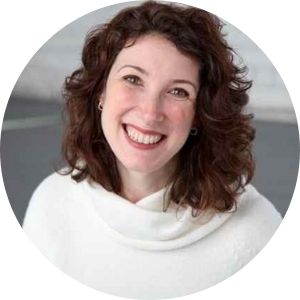
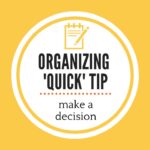
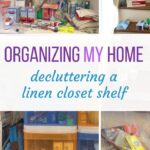

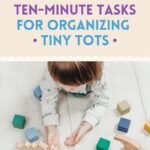
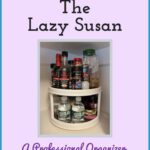
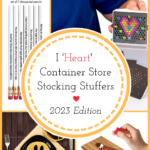
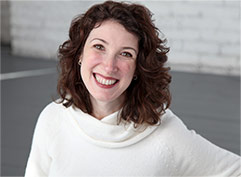
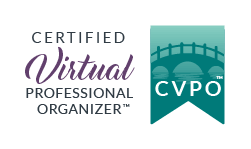
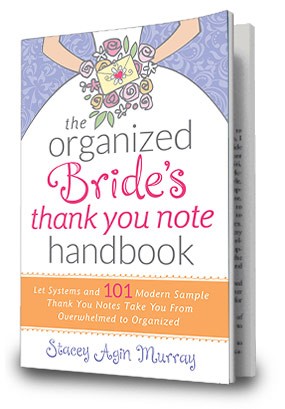
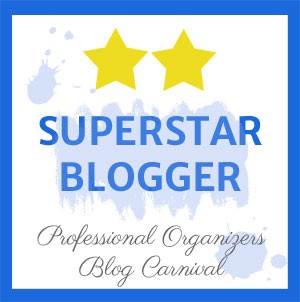

 Contact Stacey to Get Started!
Contact Stacey to Get Started!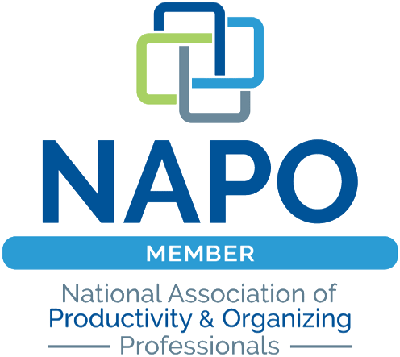
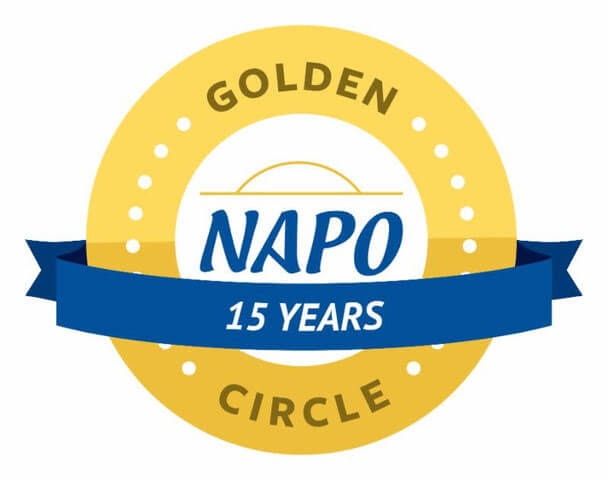
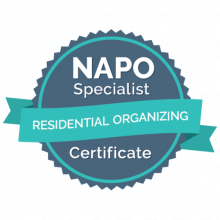

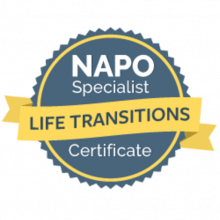
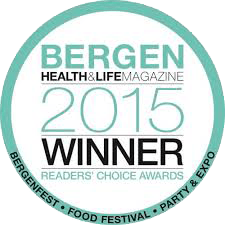
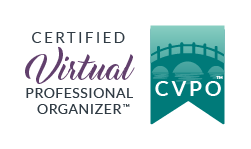
The connection between decision-making and decluttering is so intertwined that without it, the decluttering process grinds to a halt.
I loved the book “The Gentle Art of Swedish Death Cleaning.” When my husband cleared out his mom’s home a few years ago, he started revisiting the areas he had been collecting things “just in case.”
It is essential to go through everything during different transitions throughout one’s life, when they move, when their kids move out, when kids get married, etc… When you revisit these areas, you find out how many hobbies, crafts, clothing, etc… you don’t need any longer.
Thanks for discussing this topic.
Transitions are the perfect time to go through one’s ‘stuff.’ As we change and move forward in our life, some of our belongings need to do the same.
I loved the book “The Gentle Art of Swedish Death Cleaning.” My mother did this without having ever heard the term. It did make it so much easier for us on her death. I have been personally working on this for years now and have let my children know what I am doing. I have informed them that my memorabilia is now being kept just for me (I have already given to the children what I think they want) and that when I die, they can just toss the whole lot or do a quick look through to see if there is anything that they might want.
What your mom did and what you’re doing to prepare for when you’re no longer on this earth will be a blessing to your children. Giving them permission to toss certain items will give them one less thing to think about after you pass away. More time to think about Mom and her legacy…
This is one of my favorite organizing books! I was already talking and writing about such things — I call it “making decisions now so your loved ones don’t have to make them for you later” — when I read it. And there’s a section of my own book (What’s a Photo Without the Story? How to Create Your Family Legacy) called “Leave a Legacy, Not a Burden” in which I include a Margareta Magnusson quote. I found her to be charming and lighthearted while talking about an important topic.
It’s one of my favorite organizing books, too. I’ve worked with clients who have found boxes of random photos in their deceased parent’s home. Photos DO tell a story but with no one to ask who the people in the photos are, they’re often unsure what to do with them. I can only imagine what it will be like in the future to have to go through thousands of photos on a loved one’s smartphone!
This really speaks to where I am right now. I’ve always had stuff in all the categories you mentioned, and figured as long as I had room for it, it wasn’t an issue. We downsized once quite a few years ago and hope not to do it again any time soon, but I’m increasingly aware of the amount of stuff that I’m not using nor enjoying, and the only time I even think about it is when I am looking through the closet, box, or drawer where it’s kept. It’s time to get real!
Downsizing is a perfect time to do Swedish Death Cleaning. It’s great that you have an awareness of the stuff you’re no longer using or enjoying. That will make your future decision-making that much easier. I love how you say, “Time to get real!” 🙂
I enjoyed this book. She combined practical decision-making with a tone that made you not feel sad or depressed. I do think there is value in going through this process and not leaving all the work to your children, for whom it might be much more difficult.
I know that going through a parent’s belongings can be truly heart-wrenching, so the less there is of that to do, the better. A true gift we can give those who are left behind.
You’re right–Swedish Death Cleaning is a ‘true gift’ to those that are left behind. The act makes the task of going through a loved one’s belongings less heart-wrenching. Maybe AARP should give this book away with every new member that joins?!?
Oh, gracious, I LOVED “The Gentle Art of Swedish Death Cleaning” — I usually don’t enjoy organizing books by people who aren’t professionals because they often lack the empathy and understanding that different people have different skills and situations. Non-professionals often don’t consider ADHD, autism, family trauma, etc. and apply firm rules that are hard for many people to emulate. Magnusson’s attitude is less bossy and more cheerful Grandma, trying to impart wisdom without too much judgment. (Though it was surprising to hear the way she was talking in the video; I hope that was her daughter or a close friend!)
I think her message about focusing on respect, on not weighing others down, is so meaningful. And this is timely, because I just picked up her newer book, “The Swedish Art of Aging Exuberantly.” (And your line about Ikea products for cleaning dead people made me laugh out loud!)
I love that description: ‘Cheerful Grandma.’ Is that like ‘Coastal Grandmother?’:-)
In my research for the blog post, I had noticed that she wrote a new book about ‘aging exuberantly.’ I’m going to have to pick that one up, read it, and pass it on to my mother…
So glad you liked the IKEA line. Some people have never heard of Swedish Death Cleaning so I thought I’d thrown a funny joke in about it. I was going to mention something about the smell of cinnamon buns but then again, some people have never been to an IKEA! But, I’ve got to believe that more people have been to IKEA than have traveled to Sweden!
I echo what the others have said. Margareta’s book is a valuable resource for all of us and in particular those who are going through the process of editing their belongings.
I love the prompts you provide in your article. They really make the reader pause and think about their own situation.